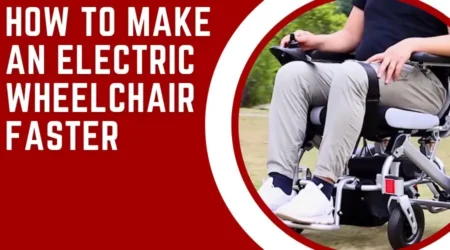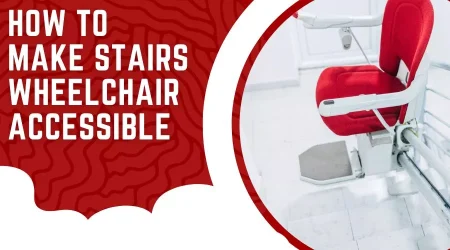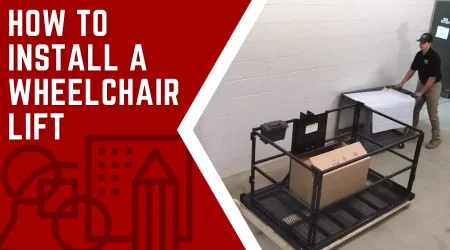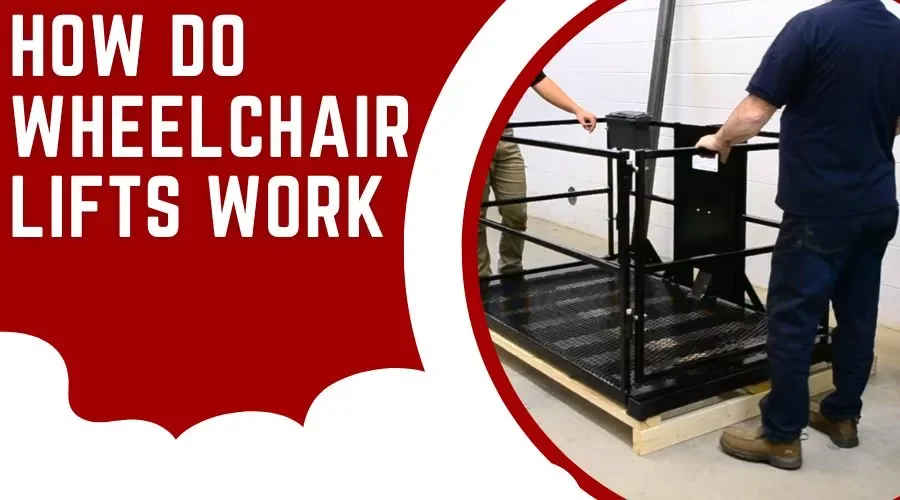
A wheelchair lift is a mechanical device designed to lift and transport people in wheelchairs.
They are available in a variety of models and sizes and can be used to move a wheelchair up and down stairs, over obstacles, and into vehicles.
Wheelchair lifts are typically powered by an electric motor or a hydraulic system.
They are often used in homes, businesses, and other public locations, and can be either permanent or portable.
Wheelchair lifts are an important tool for providing access to people with disabilities and those who need assistance in getting around.
They provide a safe and comfortable way to travel in a wheelchair and can help to reduce the risk of falls and injuries.
Wheelchair lifts also provide greater mobility for those with physical limitations, allowing them to move around independently.
How Do Wheelchair Lifts Work?
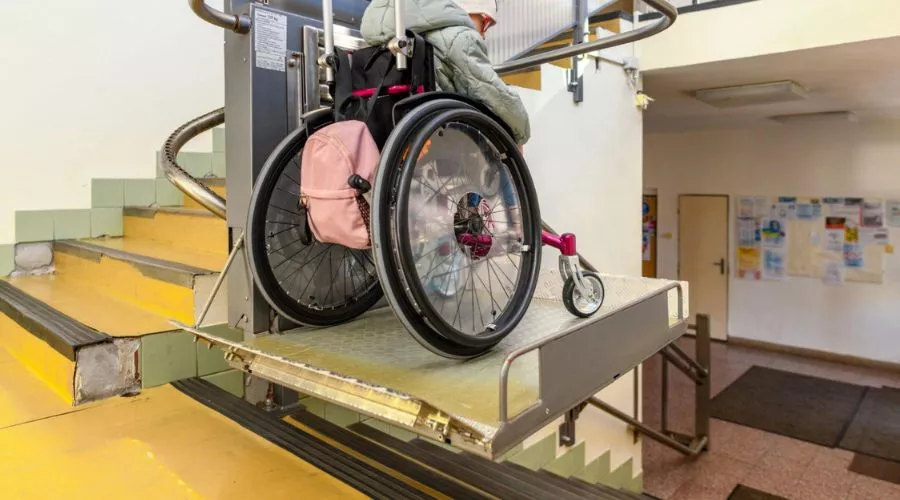
Wheelchair lifts are typically powered by an electric motor that drives a system of gears, pulleys, and cables. The motor is controlled by a control panel or remote control, which is used to raise and lower the lift platform.
The lift platform is connected to the lift’s main frame by a series of guide tracks, which are designed to keep the platform level and stable as it moves up and down. The guide tracks are usually made of steel or aluminum and are designed to withstand heavy loads and wear and tear over time.
When the lift is activated, the electric motor engages, turning gears that transfer power to the lift’s drive system. The drive system then causes the lift platform to move up or down along the guide tracks.
As the lift platform moves, it is guided by the guide tracks, which prevent it from tilting or swaying. The lift also has a braking system which ensures a smooth and stable stop of the platform. The lift platform is also equipped with safety features such as interlocks and sensors that prevent the lift from operating if the platform is obstructed or if the gate is open.
The speed of the lift can be adjusted to accommodate the user’s needs, and some wheelchair lifts are designed to stop automatically at the top or bottom of the stairs or other surfaces.
It’s important to ensure that the lift is properly installed and maintained by a professional to ensure safety and compliance with local building codes.
Benefits of Wheelchair Lifts

Wheelchair lifts, also known as vertical platform lifts or porch lifts, can provide a number of benefits for people who use wheelchairs or mobility scooters:
Wheelchair Lift Maintenance
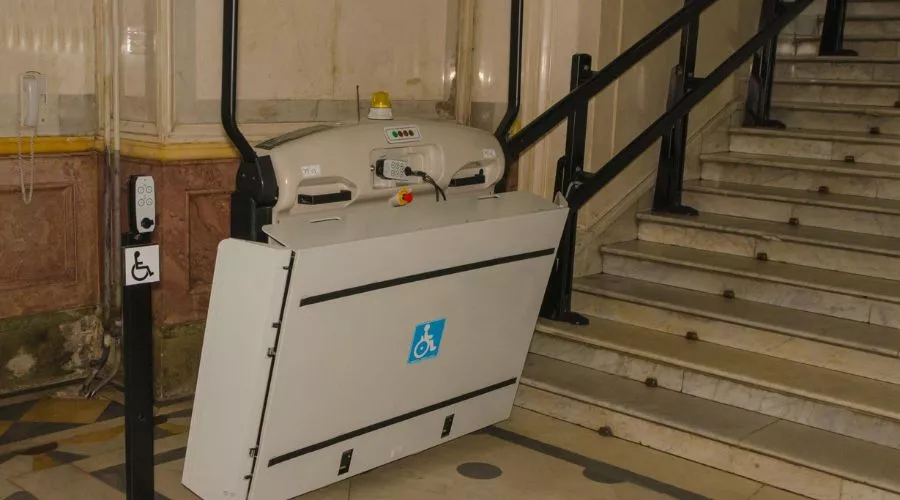
Proper maintenance of a wheelchair lift is important for ensuring its safe and reliable operation.
Regular maintenance can help to extend the life of the lift, reduce the risk of breakdowns, and ensure its safe operation.
Safety Considerations when Using Wheelchair Lifts
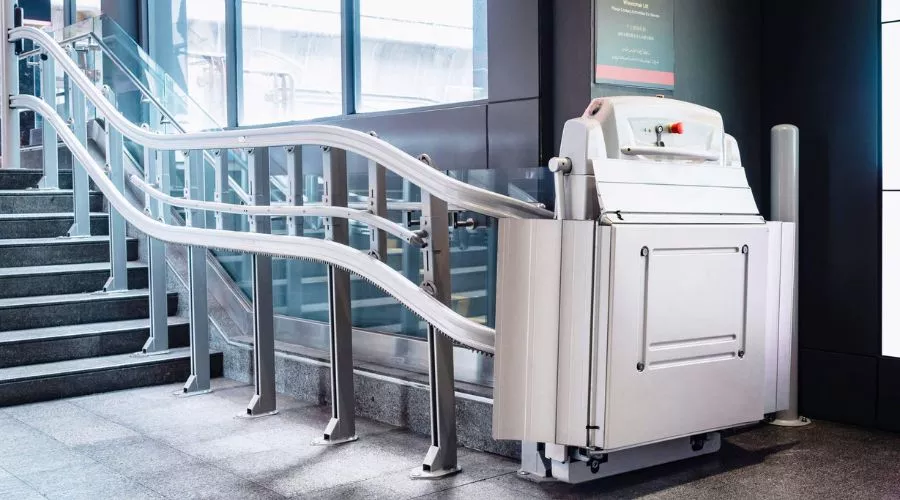
When using a wheelchair lift, it is important to be aware of safety considerations.
This includes ensuring that the lift is properly installed and maintained and that it is operated in accordance with the manufacturer’s instructions.
It is also important to ensure that the user is always supervised when using the lift.
The user should be securely strapped into the wheelchair, and the lift should be operated by a qualified operator who is familiar with its operation.
Be aware of any hazards in the area. This includes any obstacles or uneven surfaces that could pose a risk to the user or the lift.
Conclusion
Wheelchair lifts are an important tool for providing access to people with disabilities and those who need assistance in getting around.
They provide a safe and comfortable way to travel in a wheelchair and can help to reduce the risk of falls and injuries.
There are a variety of different types of wheelchair lifts, each with its own unique features and benefits.
It is important to ensure that the lift is properly installed and maintained and that it is operated in accordance with the manufacturer’s instructions.
If you are considering a wheelchair lift for your home or business, be sure to consult a qualified professional to ensure that you get the right model for your needs.
Frequently Asked Questions
How much does a wheelchair lift cost?
The cost of a wheelchair lift can vary depending on the type, size, and features of the lift. Generally, platform lifts tend to be the least expensive, followed by inclined lifts and then vertical platform lifts. The cost can also vary depending on the manufacturer, installation costs, and other factors.
What safety features are available on wheelchair lifts?
Wheelchair lifts typically have a variety of safety features, including emergency stop buttons, adjustable speed settings, and automatic stops at the top and bottom of the stairs or other surfaces. Some wheelchair lifts also have sensors that detect obstacles or uneven surfaces and will stop the lift if they detect a potential hazard.
How often should a wheelchair lift be serviced?
It is recommended that wheelchair lifts be inspected and serviced at least once a year, or more often if they are used frequently. This includes inspecting the motor and track for any signs of damage or wear and tear, as well as inspecting the lift for any loose or missing parts. It is also important to keep the lift clean and lubricated, and any worn or damaged parts should be replaced.
How are wheelchair lifts powered?
The power source for wheelchair lifts varies depending on the type of lift you have. Most lifts are powered by either a battery or an electric motor. Battery-powered lifts are designed to be portable and are often used for short-distance travel. They are usually powered by a 12-volt deep cycle battery and can be easily charged using a standard electrical outlet.
Electric motor-powered wheelchair lifts require a higher power source and are more suitable for long-distance travel. They are typically powered by either a 110-volt AC outlet or a 220-volt DC outlet. These lifts can be plugged into the wall or connected to a generator.
No matter which type of wheelchair lift you have, it is important to make sure that the power source is reliable and that it is properly maintained. This will ensure that your lift is safe and ready to use whenever you need it.
How does a bus wheelchair lift work?
That’s an interesting question! A bus wheelchair lift is a device that is designed to help people with mobility issues get onto a bus. It works by lifting the chair and its occupant onto the bus using a mechanical system of gears, levers, and motors.
The lift is usually mounted on the side or rear of the bus and is operated by the driver either manually or through a control panel. The lift consists of two platforms, one for the wheelchair and one for the wheelchair user. The platform for the wheelchair is raised up to meet the level of the bus floor. The platform then lowers so that the wheelchair can be rolled up onto the bus. Meanwhile, the platform for the wheelchair user is lowered onto the floor of the bus.
Once the wheelchair and user are both safely aboard the bus, the lift is raised back up and secured into place. This allows other passengers to board and disembarks without having to worry about the wheelchair lift being in their way.
Are wheelchair lifts hydraulic?
Yes, wheelchair lifts are hydraulic! A hydraulic wheelchair lift is powered by pressurized hydraulic fluid, and it is used to lift and transport wheelchairs and their passengers up and down stairs and other inclines. The operation of a hydraulic wheelchair lift is similar to an elevator, but it is much more compact and can fit in tight spaces. The lift has a platform or ramp that is raised or lowered by a cylinder, which is powered by hydraulic fluid. The cylinder is connected to an electric motor that activates the lift when the switch is pressed.
The main advantage of a hydraulic wheelchair lift is its ability to provide access to areas that are not easily accessible by traditional elevators or wheelchair ramps, such as basements or second-story areas. They also provide a safe and secure way for wheelchair users to access areas with stairs or other inclines that may be too steep for a ramp. Moreover, hydraulic wheelchair lifts are usually quieter than other types of lifts, making them more discreet and less disruptive to use in public settings.

![How Do People In Wheelchairs Drive An Automatic Car – [Updated 2023]](https://perfectwheelchairs.com/wp-content/uploads/2023/01/How-Do-People-In-Wheelchairs-Drive-450x250.webp)

